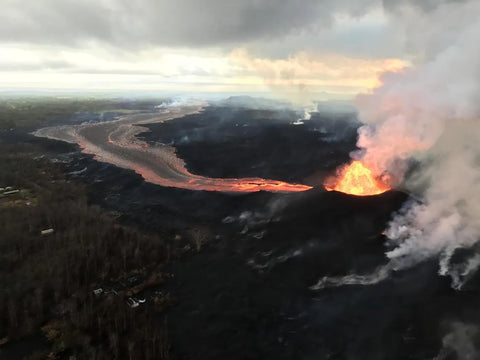Welcome to our exploration of volcanoes, nature's powerful and awe-inspiring geological phenomena.
Today, we uncover their origins, formation processes, and the factors that shape their behavior.
What is a volcano?
Volcanoes are openings in the Earth's crust through which molten rock, volcanic ash, and gases are ejected during volcanic eruptions. These majestic structures can take various forms, including cones, domes, and calderas, and are often associated with tectonic plate boundaries, hotspots, and volcanic arcs.

How do volcanoes form?
Volcanoes form through the movement and interaction of tectonic plates, which create zones of intense heat and pressure beneath the Earth's surface. As magma rises from the mantle and accumulates in chambers beneath the crust, it eventually breaches the surface through volcanic vents, leading to eruptions of lava, ash, and gases.
Why are there fewer volcanoes forming today?
While volcanoes continue to form through tectonic activity and hotspot activity, the rate of volcanic activity on Earth is relatively low compared to geological history. This is partly due to the cooling and solidification of the Earth's interior over time, resulting in fewer instances of magma reaching the surface to form new volcanoes.
Which volcanoes are still growing?
Several volcanoes around the world are still actively growing due to ongoing volcanic activity. Examples include Mauna Loa and Kilauea in Hawaii, Mount Erebus in Antarctica, and Mount St. Helens in the United States. These volcanoes are characterized by frequent eruptions and the accumulation of lava and volcanic material that contribute to their growth over time.
What is the largest volcano on Earth?
The largest volcano on Earth is Mauna Loa, located on the Big Island of Hawaii. Mauna Loa is a shield volcano that rises over 13,000 feet above sea level and extends deep into the ocean floor. It is one of the most massive and active volcanoes in the world, with a history of frequent eruptions and lava flows.

Which is the most active and dangerous volcano on Earth?
One of the most active and dangerous volcanoes on Earth is Mount Vesuvius, located near Naples, Italy. Mount Vesuvius is infamous for its catastrophic eruption in 79 AD, which buried the ancient cities of Pompeii and Herculaneum under layers of ash and pumice.

Today, Vesuvius remains an active volcano that poses a significant risk to the surrounding population due to its proximity to densely populated areas.

Why is volcanic gas noxious?
Volcanic gas emissions during eruptions can pose significant hazards to both human health and the environment. These gases, including sulfur dioxide, carbon dioxide, hydrogen sulfide, and others, are released from magma as it rises and erupts from a volcano. Exposure to volcanic gases can cause respiratory problems, eye irritation, and other health issues in humans and animals. Additionally, sulfur dioxide emissions can lead to the formation of acid rain, which can harm vegetation, soil, and aquatic ecosystems. The release of volcanic gases into the atmosphere can also contribute to air pollution and climate change on a global scale.
In conclusion, volcanoes are dynamic and powerful geological features that continue to shape our planet's landscape and influence the environment. By understanding how volcanoes form, grow, and behave, we gain valuable insights into the forces that drive Earth's geological processes and the potential hazards associated with volcanic activity.
The Map of Hawaii that we created has a full detailed section on how the Hawaiian Archipelago formed as these Islands are still forming today in a magnificent display of Earth's creative powers.



